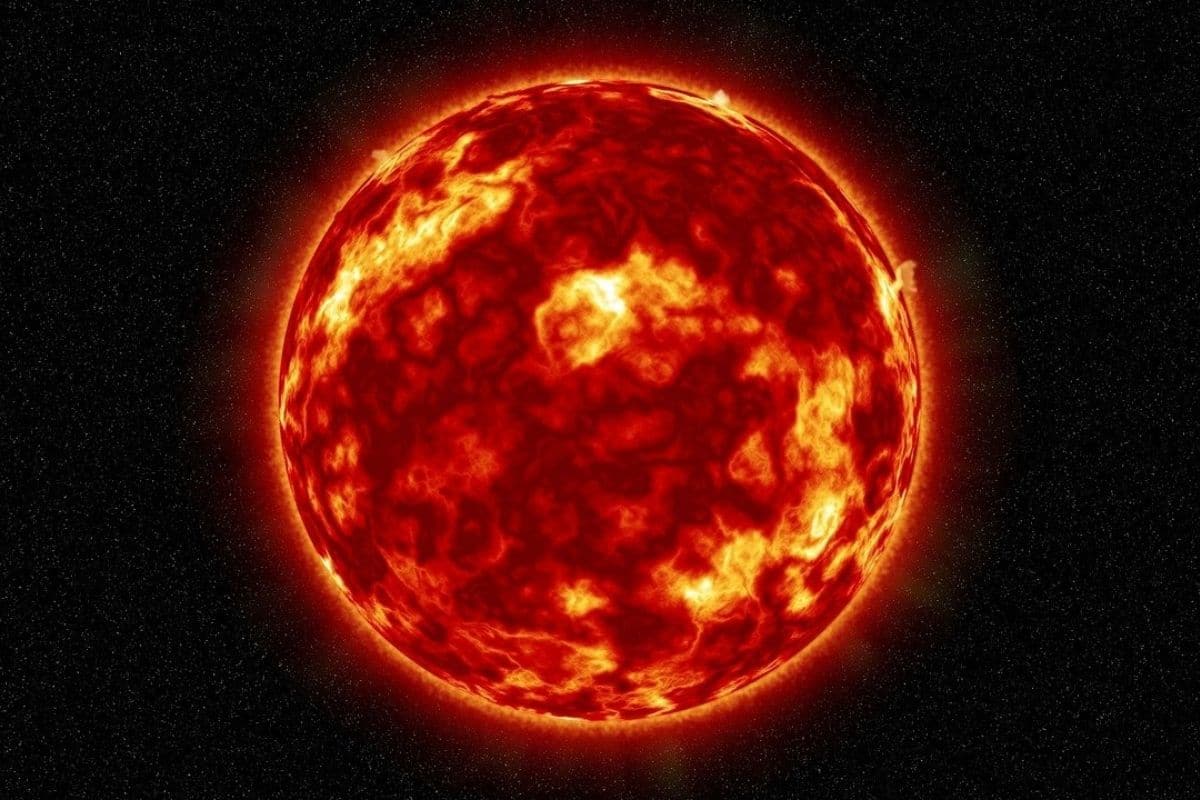

About 9,200 years ago, during the solar minimum, the Earth was suddenly bombarded with a hot stream of charged particles. And that’s quite strange.
The sun is one of the reasons life can exist on Earth. But our companion can also cause quite a few problems. When there is a lot of activity on the surface of our parent star, this can give rise to ‘extreme space weather’ such as solar storms. Until now, however, researchers have assumed that most solar storms make an appearance during the so-called solar maximum. But drilled ice cores now show that a solar storm also raged in the distant past at a rather unexpected moment: during the solar minimum.
solar cycle
Our parent star roughly goes through an 11-year cycle, characterized by a solar minimum – a period when the sun is very quiet and generates few sunspots and flares – and a solar maximum, during which the star is much more active. When there is a lot of unrest on the sun during such a solar maximum, this can lead to extreme space weather, such as solar storms. What actually happens during a solar storm is that the sun hurls a hot stream of charged particles toward Earth. Although the earth is fortunately protected by a magnetic field, such events can certainly cause damage, for example to the electricity grid. In addition, severe solar storms can disable satellites, block GPS signals and disrupt radio communications.
In the study, researchers looked at more than 9,000-year-old ice cores, drilled from Greenland and Antarctica. And after a thorough analysis, the research team makes a surprising discovery. They found traces of the radioactive isotopes beryllium-10 and chlorine-36. These isotopes are produced by high-energy cosmic particles and can be stored in ice and sediment.
Solar storm during solar minimum
It means that researchers have stumbled upon traces of a solar storm that happened some 9,200 years ago. What’s crazy about this, though, is that the storm came on the scene during the solar minimum; the quiet phase of the sun. “We were surprised to find that a hitherto unknown giant solar storm occurred during a phase of low solar activity,” said researcher Raimund Muscheler.
unpredictable
The study underscores once again how unpredictable our parent star can be. While solar storms are believed to occur earlier during active phases of the sun, current research shows that this is apparently not always the case. And so further research is necessary. “Identifying whether there is a relationship between solar activity and the occurrence of extreme solar storms is fundamental to the planning of space missions,” the researchers write in their study. “This is to minimize the risk to space technology and to the health of astronauts.”
Solar storms can be life-threatening for astronauts in space. “For example, if an Apollo mission had flown in August 1972, the amount of radiation the astronauts would have experienced could have had serious, possibly even fatal, consequences,” the researchers write. So not only can solar storms pose a significant health risk, it also affects, for example, the electronics on which they build. And so, especially with a view to upcoming space missions, it is very important that researchers better understand when and under what conditions solar storms and other extreme space weather can occur.
Source material:
“Ancient ice reveals mysterious solar storm” – Lund University
Image at the top of this article: A Owen via Pixabay